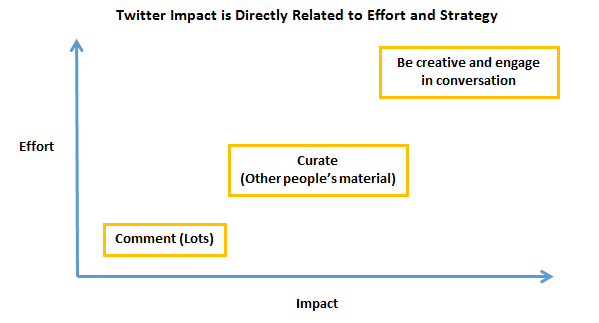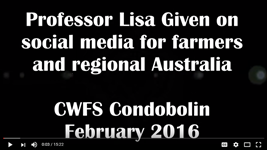Information from projects, research and experiences on specific topics is being ‘lost’ and there is not a central outlet/repository to present this information; current availability of information is fragmented and therefore inaccessible or of limited use for people to learn from and use. There is recognition that some people are not able to participate in group learning situations and need to access information/knowledge remotely. Information access serves a vital role in supporting the capacity building process for individuals (Coutts et al, 2005).
The passive supply of information has often been considered a weak and ineffective instrument but it has been demonstrated that there is a rigorous and effective process behind generating and developing critical information sources for individuals and groups.
There is a need to build and maintain information repositories for long term access and usability and Information needs to be accessible and in a useful format for multiple users. A key underlying philosophy of this approach is also that people will need different information at different stages of their change process.
There is a check list to assist in the identification and development of an Information access model for extension:
- That there are clear objectives and the clear identification of information that makes sense to end users
- That there is opportunity to monitor usage, and obtain ongoing feedback to adjust the objectives and information to suit the dynamic needs of end users
- That there is opportunity to link to real people and peers who may be searching for similar information or have other relevant information
- That information pathways are clearly provided to avoid end users feeling overwhelmed or lost in navigating through the information channels
- Quality assurance systems are in place to ensure the currency, relevance and quality of information
- Creativity and seeking ‘novel’ information is encouraged and provided for
- Information providers are well supporting and training is available when needed
- There is ‘space’ and opportunity for people to explore and experiment within their information seeking experience
- Key methods to provide information to target and mass audiences are provided:
- Information and Communication Technologies (Internet – websites and social media; email; mobile phones, radio, television)
- Information events such as annual roadshows that are delivered in strategic regions, field days and demonstration sites
- Printed materials
Key Example: Social Media Use in Agricultural Extension
Social media refers to the electronic means of interactions in which people create, share, consume and exchange information and ideas in virtual communities, networks and as a general Internet user.
Kaplan and Haenlein (2009:61) define social media as a, “a group of Internet-based applications that build on the ideological and technological foundations of Web 2.0 and allow for the creation and exchange of user-generated content.” This includes world-wide popular applications such as Facebook, YouTube, Google+, LinkedIn, Vimeo and Twitter and the many more applications that are available. Raj and Bhattacharjee (2014) comment that social media is increasingly relevant as a communication medium considering the extent of pluralism in extension funding and delivery; which requires new connections and relationships, knowledge flows and partnerships amongst a wider range of RD&E actors within and across other “Agricultural Innovation Systems”.
Social media can provide information and communication opportunities regardless of geographical location and time. Although there is a gap in research around the use of social media in agricultural extension, early research findings suggest there are clusters of social media activity amongst the rural sector in Canada, UK, Australia and Ireland to communicate and share innovations (Raj and Bhattacharjee, 2014).
The video of an interview by Central West Farming Systems with Professor Lisa Given, discusses the benefits for farmers and farm businesses in embracing social media, mainly Twitter and Instagram. It outlines that even with poor mobile or internet coverage these platforms can still be adapted. To view click on the link below.
Some of the challenges in using social media for agricultural extension are (Raj and Bhattacharjee, 2014):
- Passive use: a vast majority of social media visitors tend to be passive users rather than being more active users in terms of adding posts, sharing ideas and discussing issues
- Irrelevant information: social media content needs monitoring as there is often a bulk of content that is not relevant to the user – there may be a role for an extension practitioner to become a social media curator in order to strategically select or highlight content that would be of interest to their particular audience/client
- Infrastructure limitations: the quality of Internet user experience varies with bandwidth speed, connectivity and access to Information and Communication Technologies
- Attitude towards social media: it is generally considered a medium for personal use and not for serious business activities
Some ways to respond to these challenges are (Raj and Bhattacharjee, 2014):
- Become an active quality content generator by contributing tweets, blogs and videos to build interest in using social media for agricultural extension and helping to ensure content remains relevant and adds value to the pool of information
- Encourage self-publication and collective contributions from users: Social media is an easy way for people to
- publish their knowledge and ideas and to share it with a select group or allow open access to a global community
- Proactively build capacity in using social media for others by offering training or sources of training
- Institutionalise the use of social media in your professional organisation: By making tweeting, blogging etc. a part of your everyday professional life, this will help to build a culture of using social media in a professional context and increase the validity of such practices as a sources of information and ‘spaces’ to network for collaboration
Twitter (Stanley, 2013)
The Twitter application is being used across the developed world in the agricultural extension context e.g. AgChat (Twitter online discussion group by AgChat Foundation) and individual twitter users. Twitter is an online social media site and micro blogging service, which limits the individual messages you send to a maximum of 140 characters.
Messages or “tweets” give users the power to share and create ideas quickly and efficiently across the world. Given it is short, sharp message format it enables users to receive a steady stream of content that can include opinions and links to articles and resources that normally users may not ordinarily come. Information comes via news feed and it is quick and easy to look through the feed to find what’s valuable to individual users.
Twittering can connect you with people outside your current circle of contacts, importantly including people of “influence”. In an agricultural extension context, it can connect farmers, advisers and other professionals in peer-based or professional networks. It has been noted that the impact of tweeting will increase with the user’s level of engagement and the effort made i.e. commenting on tweets is likely to have less impact, but requires less effort compared to higher impact activities such as curating other people’s tweets, creating new material or starting up conversations based on Twitter content.

Impact of Twitter relative to activity: http://www.onefarm.ac.nz
AgriOne researcher, Phillips (2004), has pointed out that twitter impact is directly related to effort and strategy. To be effective – Comment (lots), Curate (other people’s material…”do the reading” for your target audience and point them towards information that would be useful for them) and Engage in Conversation (two way or with multiple parties at once)

eXtension is an example of an online extension website that serves as an information portal and community building platform. The eXtension Foundation is part of the Cooperative Extension System in the United States and its mission is to increase Extension Professionals effectiveness in addressing issues of importance to the United States. Their focus is on helping Extension Professionals generate a more visible, measurable, local impact.
The services provided through the eXtension program are supported by USDA-NIFA for the purposes of disseminating research-based information to the public.
Content sources and further information
Coutts, J., Roberts, K., Frost, F., and Coutts, A. (2005). The role of extension in building capacity: What works and why. Barton, A.C.T.: Rural Industries and Development Corporation: Cooperative Venture for Capacity Building.
Phillips, T. (2014) Understanding rural use of digital connectivity. OneFarm – Centre fo Excellence in Farm Business Management, presented at the Digital Rural Futures Conference 2014, University of Southern Queensland, Toowoomba
Kaplan, A. & Haenlein, M. (2010). Users of the world, unite! The challenges and opportunities of Social Media. Business Horizons, Vol.53(1): 59-68.
Raj, S. and Bhattacharjee, S. (2014) Social media: new generation tools for “agricultural extension”? Blog 42: December 2014. Agricultural Extension South Asia.
How to set up a Twitter account: https://support.twitter.com/articles/100990#
Stanely, S. (2013) A Report for the New Zealand Nuffield Farming Scholarship Trust – Harnessing Social Media in Agriculture. Nuffield.
Professor Lisa Given on effectively using social media in agriculture. Published on Feb 11, 2016 by Central West Farming Systems. An interview by Central West Farming Systems with Professor Lisa Given, discussing the benefits for farmers and farm businesses in embracing social media, mainly Twitter and Instagram. Even with poor mobile or internet coverage these platforms can still be adapted. https://www.youtube.com/watch?v=g664QnBbN8A&t=3s
The Importance of Social Media in Agriculture – Danica Leys, Director of AgChatOz. https://www.youtube.com/watch?v=3VFwdxCm_hk&t=1318s Published on Apr 30, 2013 by Herefords Australia.
Webinar on how to use social media in the agriculture extension context, Presenters – Debbie Roos ( Agriculture Agent with North Carolina Cooperative Extension) and Debra Heleba (Vermont state SARE coordinator at the University of Vermont Extension) – https://www.youtube.com/watch?list=UUNlwP-FG1Ylbk4ic-MVhGYw&v=Jz_eYUbnmHM

